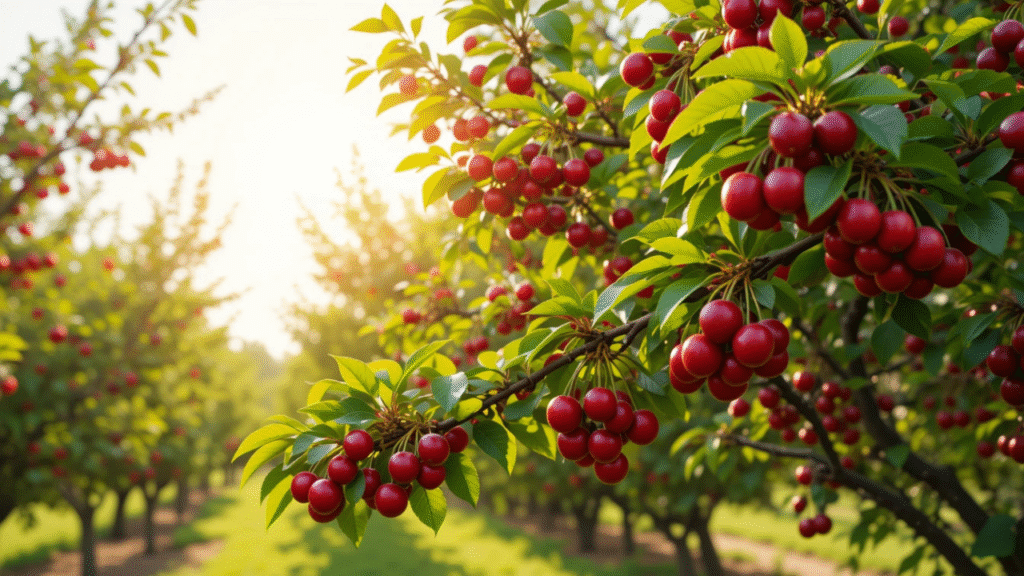
Best Fertilization Practices for Cherry Trees to Promote Growth: Expert Tips for Healthy Yields
🌸 Dreaming of vibrant cherry blossoms and sweet, juicy harvests? It all starts beneath the surface — with proper fertilization. Whether you’re nurturing a young sapling or managing a mature orchard, knowing the best fertilization practices for cherry trees to promote growth is key to unlocking their full potential. 🍒
In this article, we’ll share expert tips that are easy to follow, even for beginners. You’ll learn when to fertilize, what to use, and how to avoid common mistakes — so your cherry trees thrive season after season. Let’s dig into the root of healthy growth!
Table of Contents
Toggle🌳🍒 Why Fertilization Matters for Cherry Trees
Fertilization is more than just plant food — it’s essential care that helps cherry trees grow strong, bloom beautifully, and produce sweet, healthy fruit. 🌸
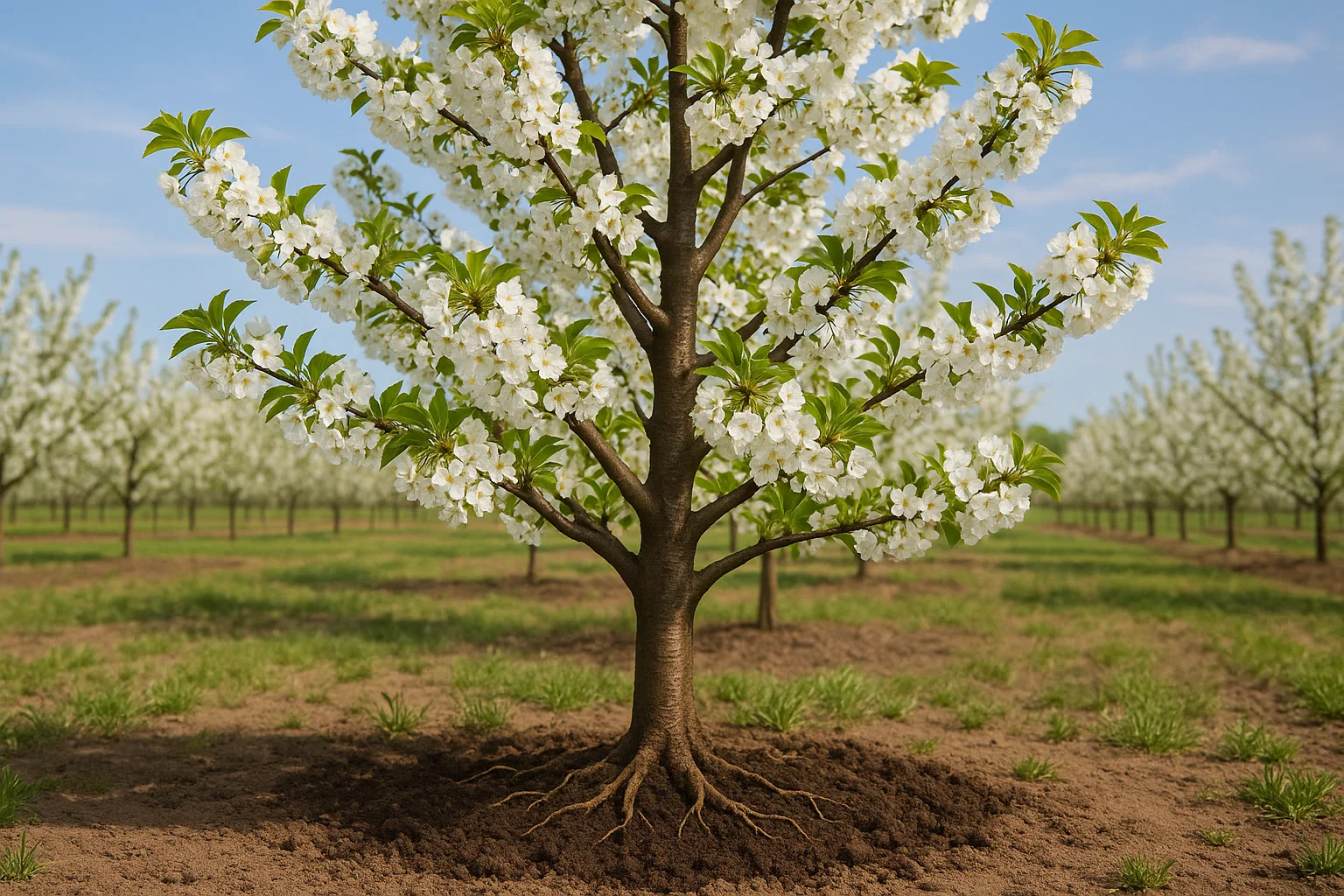
Without the right nutrients, cherry trees can struggle with weak branches, poor flowering, and small or low-quality cherries. 😟 Proper fertilization gives your trees the boost they need to build strong roots, lush leaves, and tasty harvests. 🌿🍒
🌱 Think of it like this: good soil and smart feeding = happy trees and better yields. By following the best fertilization practices, you’re setting your cherry trees up for long-term success. 🍒💪
🌿🧪 Understanding Cherry Tree Nutrient Needs 🌿🧪
For cherry trees to grow strong, bloom beautifully, and produce juicy fruit, they require a well-balanced diet of essential nutrients. Each nutrient plays a specific role in the tree’s overall health and productivity. 🌱🍒
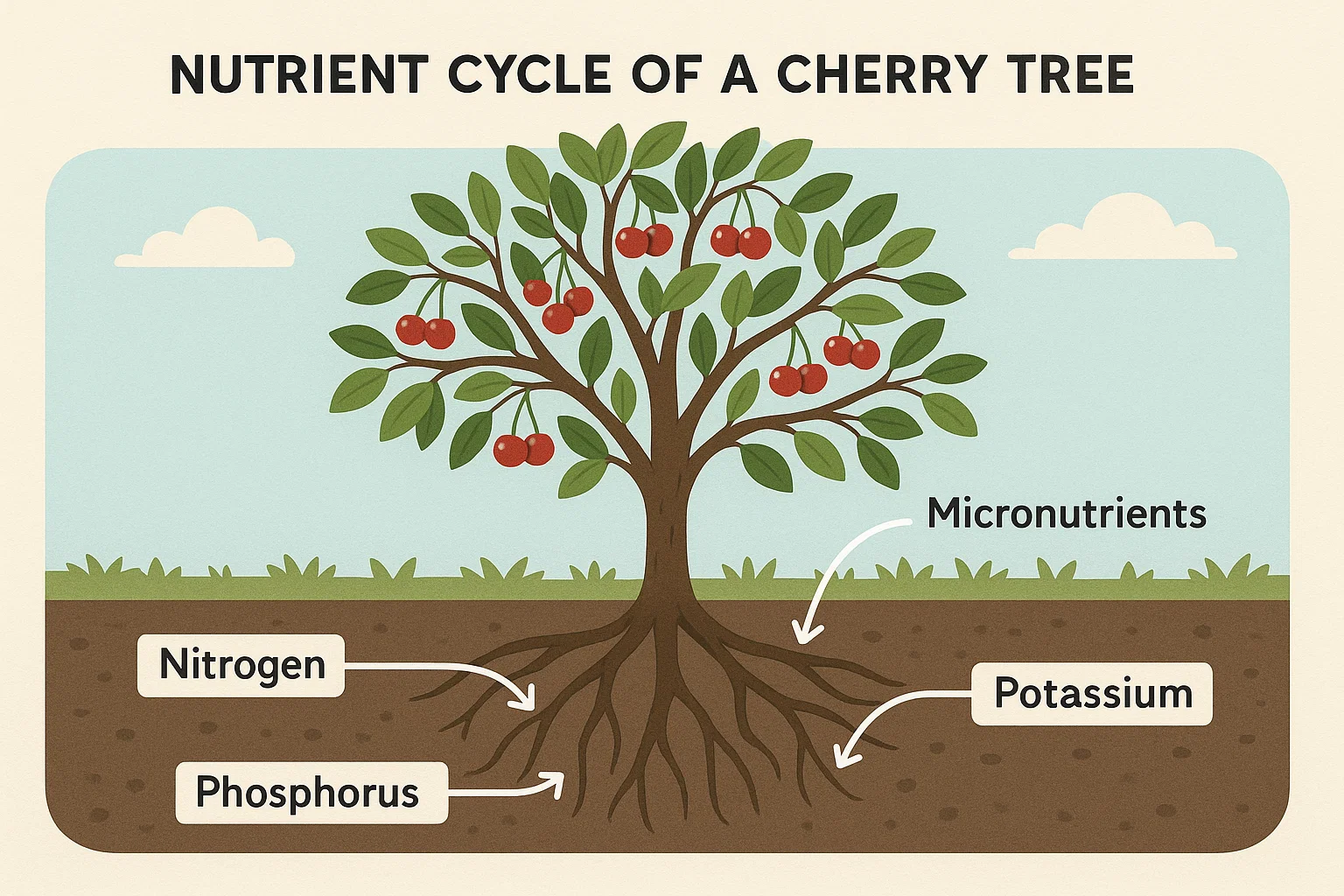
Here’s a breakdown of the key nutrients cherry trees need:
🌿 Nitrogen (N) 🌿
Essential for vigorous leaf and stem growth. It helps your cherry tree develop a robust canopy, which is crucial for photosynthesis and overall tree health.
🌸 Phosphorus (P) 🌸
Vital for root development, flower formation, and fruiting. It helps the tree establish a strong root system and encourages early bloom, which leads to better fruit yields.
🍎 Potassium (K) 🍎
Enhances the quality of fruit, improves disease resistance, and helps with water regulation. Potassium is crucial for promoting healthy, flavorful cherries.
🧂 Micronutrients 🧂
These include calcium, magnesium, iron, and zinc. Though required in smaller amounts, they are still crucial for overall tree health, influencing processes like cell structure and enzyme function.
🌿 Signs of Nutrient Deficiency 🌿
- Yellowing leaves (chlorosis): Often indicates a nitrogen deficiency.
- Poor fruiting: Can be a sign of insufficient phosphorus or potassium.
- Weak growth: Might mean your tree needs more micronutrients or a balanced fertilizer.
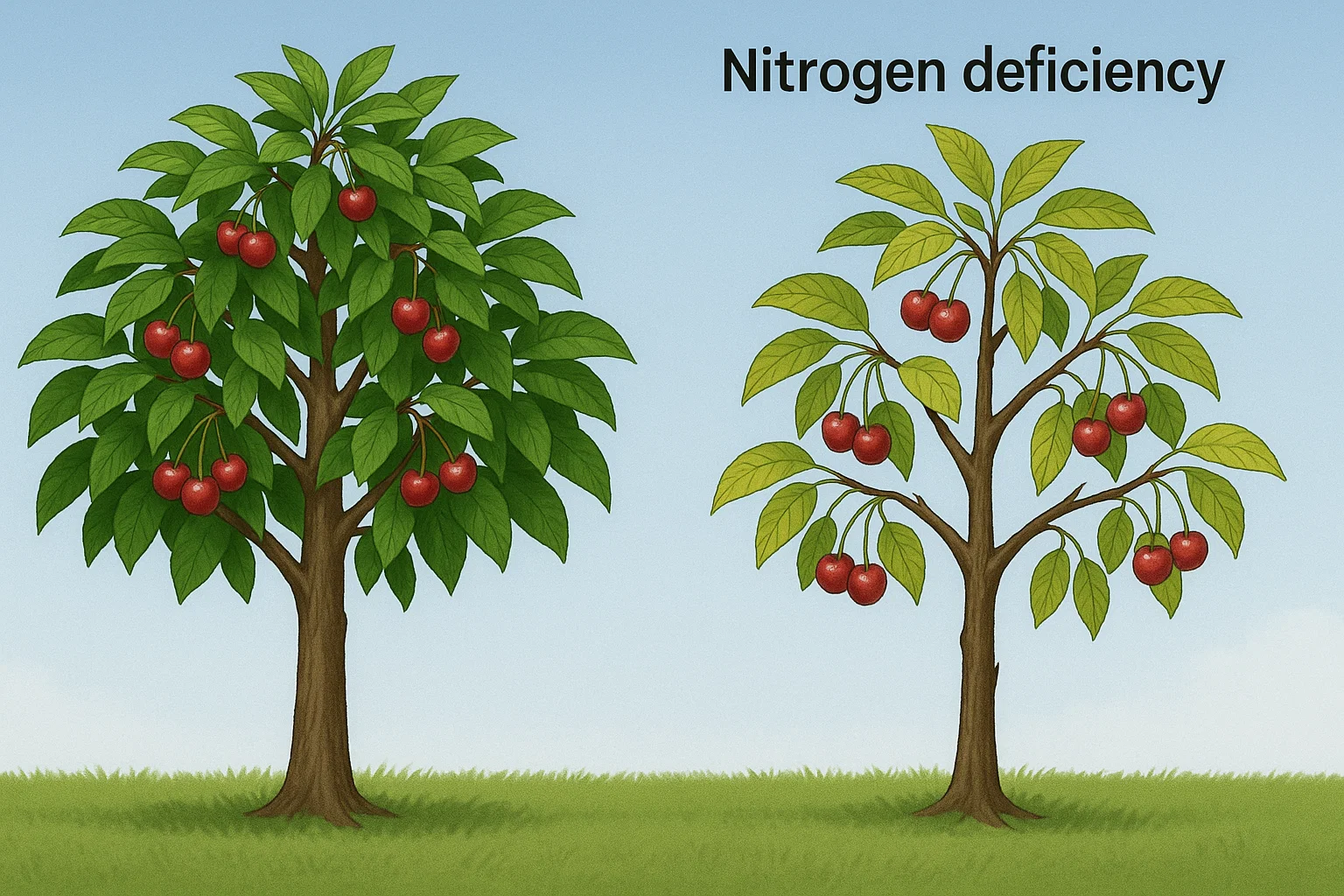
Understanding these nutrient needs helps you choose the right fertilizer to keep your cherry trees healthy and productive. By feeding them the right balance, you’ll ensure they have the energy to grow, bloom, and produce those delicious cherries. 🍒💚
🧑🔬🌍 Soil Testing: The First Step to Smart Fertilization 🧑🔬🌍
Before you start fertilizing, it’s crucial to know what your soil needs. Think of soil testing as a “check-up” for your garden — it helps you understand exactly what nutrients your cherry trees are missing. 🧪
🌱 Why Soil Testing Matters 🌱
Soil pH and nutrient levels directly impact how well your tree absorbs fertilizers. For example, if your soil is too acidic or too alkaline, your cherry tree might not be able to access essential nutrients, even if they’re present. 🌱

🧪 How to Test Your Soil 🧪
- DIY Kits: Available at garden centers, these kits are easy to use and provide quick results.
- Send a Sample: For more precise analysis, you can send a soil sample to your local extension service or a lab. They’ll provide detailed information on nutrient levels and pH.
🌍 What to Test For 🌍
- pH Level: Cherry trees thrive in slightly acidic soil (pH 6.0 to 6.8). If your soil is too acidic or alkaline, it may be time to amend it.
- Nutrient Levels: Soil tests will show you levels of nitrogen, phosphorus, potassium, and micronutrients — so you can choose the right fertilizer mix.
🔍 Pro Tip 🔍
Test your soil every 2-3 years to stay on top of nutrient levels and ensure your trees get the right care.
Soil testing is the first step in fertilizing cherry trees the smart way. It gives you the knowledge to make informed decisions and helps you avoid wasting money on fertilizers your soil doesn’t need. 💰🌿
🕒🌸 Best Time to Fertilize Cherry Trees 🕒🌸
Timing is everything when it comes to fertilizing your cherry trees. Fertilize at the wrong time, and you could harm their growth or waste valuable nutrients. So, when is the best time to fertilize? Let’s break it down!

🌱 Early Spring (Before Growth Starts) 🌱
The best time to give your cherry trees a boost is in early spring, just before the tree begins to bud. This is when your tree needs the most energy to kick-start its growth for the season. Applying fertilizer now helps your tree prepare for a healthy growing season, supporting leaf growth, flower development, and overall vigor.
🍒 After Fruiting (Late Spring or Early Summer) 🍒
If your cherry tree produces fruit, you may want to give it another round of nutrients after the harvest. Fertilizing after fruiting helps the tree restore energy and build strength for the next growing season. However, be mindful not to over-fertilize, as the tree may still be recovering.
🍂 Avoid Late Summer or Fall Fertilizing 🍂
Avoid fertilizing in late summer or fall, as this can encourage new growth that won’t have time to harden off before winter. This weak growth can be vulnerable to frost damage and stress.
🔔 Pro Tip 🔔
For young trees, a light fertilization once in the spring is usually enough. For established trees, consider a second application after harvest.
By timing your fertilization right, you’ll help your cherry trees thrive without wasting resources. It’s all about giving them the nutrients they need at the right moment! For seasonal guidance and timing tips, check out the Best Fertilization Practices for Cherry Trees to Promote Growth to keep your trees on the path to success.🌳🌸
🌿💡 Choosing the Right Fertilizer 🌿💡
Not all fertilizers are created equal, and choosing the right one for your cherry trees is essential for their health and growth. The right fertilizer provides the balanced nutrients your trees need to thrive without overwhelming them. Let’s look at your options!

🏭 Synthetic Fertilizers 🏭
These are the fast-acting, easy-to-use fertilizers that come in various formulations. They’re great for giving a quick nutrient boost when needed, especially if your trees show signs of deficiency. Look for a balanced fertilizer like 10-10-10 (equal parts nitrogen, phosphorus, and potassium) to support general growth, flowering, and fruiting.
Pros: Fast results, easy to apply
Cons: Can leach quickly and may harm soil health if overused
🌱 Organic Fertilizers 🌱
For a more natural approach, organic fertilizers (like compost, manure, or fish emulsion) provide a slow-release of nutrients that improve soil structure over time. They feed your cherry tree while also boosting the overall health of the soil, promoting good microorganisms and organic matter.
Pros: Improves soil health, environmentally friendly
Cons: Slower release, might require more frequent applications
⏳ Slow-Release Fertilizers ⏳
Slow-release fertilizers gradually release nutrients over several months, which can be great for ensuring your cherry trees get steady nourishment throughout the growing season. These fertilizers are available in both synthetic and organic forms.
Pros: Steady, long-lasting nutrient release, less risk of over-fertilization
Cons: Initial cost can be higher, takes longer to see results
🧂Micronutrient-Rich Fertilizers 🧂
Sometimes, cherry trees need more than just the basic three nutrients (N, P, K). Micronutrient fertilizers, which contain elements like calcium, magnesium, and iron, can be used to address specific deficiencies. These are particularly useful if soil testing indicates low levels of essential micronutrients.
Pros: Addresses specific deficiencies, promotes optimal growth
Cons: Not always necessary unless a deficiency is identified
🔍 Pro Tip 🔍
Always check the N-P-K ratio on fertilizer labels. For cherry trees, a balanced or slow-release formula with additional micronutrients will generally be the best choice.
Choosing the right fertilizer depends on your tree’s needs and your gardening goals. Whether you prefer the quick action of synthetic fertilizers or the long-term benefits of organic options, the key is finding a balance that works for your cherry trees and your soil. 🌳💚
🌱💧 How to Apply Fertilizer Properly 🌱💧
Applying fertilizer correctly is just as important as choosing the right one. Even the best fertilizer can’t work its magic if it’s not applied properly. Let’s go over the best methods to ensure your cherry trees get the nutrients they need without overdoing it.
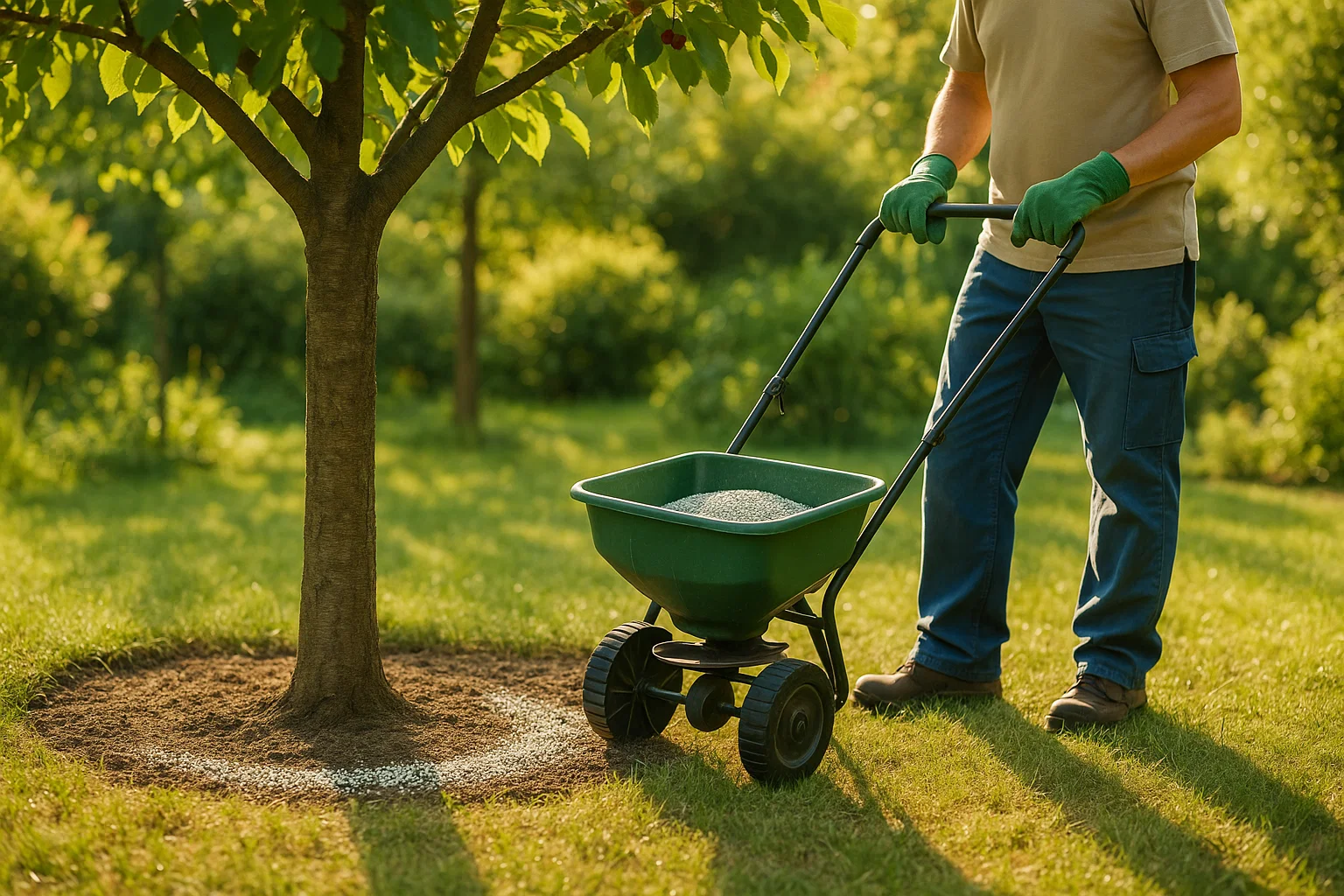
🌳 Apply Around the Drip Line 🌳
The drip line is the area around the tree where water drips off the branches during rainfall. This is where the tree’s feeder roots are concentrated, so it’s the best place to apply fertilizer. Sprinkle the fertilizer evenly around this area, not right at the base of the tree, to prevent burning the roots.
🚫 Avoid Contact with the Trunk 🚫
Never place fertilizer directly at the tree’s trunk. Direct contact can harm the bark and roots. Always leave a few inches of space between the fertilizer and the trunk to protect the tree from damage.
💦 Water After Application 💦
Watering after fertilizing helps the nutrients reach the roots. If you’re using granular fertilizer, be sure to water deeply to dissolve and distribute the fertilizer into the soil. This also helps prevent fertilizer burn, which can occur if the fertilizer sits too long on the surface.
⚖️ Use the Right Amount ⚖️
Follow the recommended dosage on the fertilizer label. Over-fertilizing can cause excessive growth and weak branches, while under-fertilizing might lead to poor fruit production.
Tip: It’s always better to apply slightly less than too much — it’s easier to add more fertilizer later than to fix the damage from overuse.
🌍 Spread Fertilizer Evenly 🌍
If you’re applying granular fertilizer, spread it evenly in a circular motion to ensure uniform coverage. If you’re using liquid fertilizer, apply it slowly and evenly around the tree’s drip line.
🌅🌇 Apply in the Morning or Late Afternoon 🌅🌇
To avoid fertilizer burn from the sun, apply it during the cooler parts of the day, either in the early morning or late afternoon. This allows the fertilizer to settle into the soil without evaporation or harm to the tree.
🔔 Pro Tip 🔔
For young trees, apply fertilizer more lightly, as their roots are still developing. Established trees need a bit more to support growth and fruiting.
Proper application ensures that your cherry trees get the nutrients they need without any waste or harm. A little care and attention to detail will make all the difference in the long run. To apply nutrients effectively and safely, follow the Best Fertilization Practices for Cherry Trees to Promote Growth and nurture your trees with confidence. 🌳💚
❌🌳 Common Mistakes to Avoid ❌🌳
Fertilizing your cherry trees may seem straightforward, but there are a few common mistakes that can hinder your tree’s growth and overall health. Let’s look at what to avoid to keep your trees thriving.
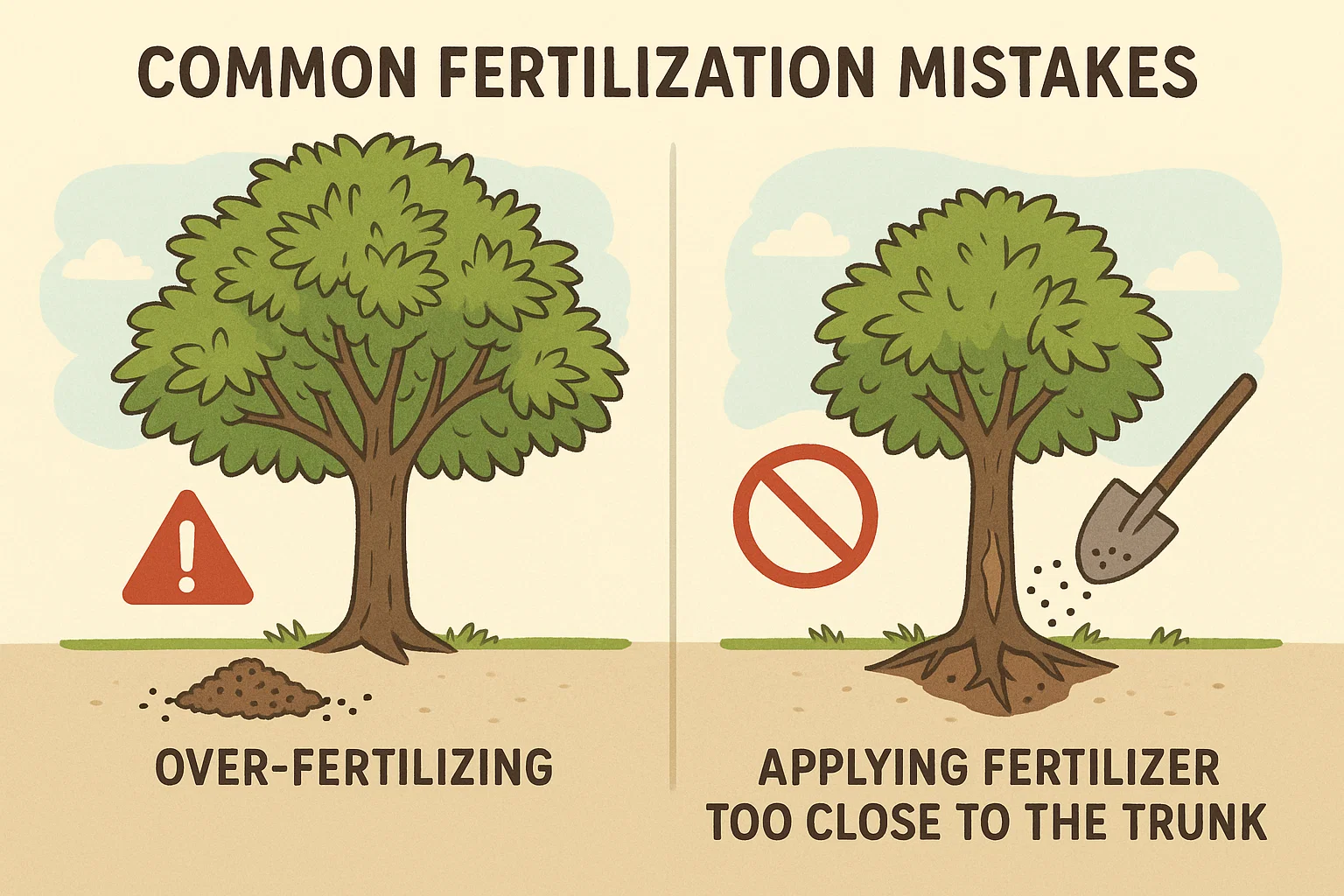
🚫💥Over-Fertilizing 🚫💥
It’s tempting to think more fertilizer means better results, but over-fertilizing can actually harm your cherry trees. Too much fertilizer can lead to excessive leaf growth, weak branches, and reduced fruit production. Always follow the recommended dosage and avoid applying too frequently.
🕔 Fertilizing at the Wrong Time 🕔
Timing matters! Applying fertilizer in late summer or fall can encourage soft, tender growth that’s vulnerable to winter damage. Stick to early spring (before growth starts) and possibly a second application after harvesting, but avoid fertilizing during dormancy or too late in the year.
🔬 Ignoring Soil pH 🔬
Cherry trees prefer slightly acidic soil, with a pH between 6.0 and 6.8. If your soil is too acidic or too alkaline, your trees won’t be able to properly absorb nutrients, even if you apply the right fertilizer. Regular soil testing ensures your tree’s environment stays in the optimal range.
⚠️ Using the Wrong Type of Fertilizer ⚠️
Not all fertilizers are suitable for cherry trees. Using high-nitrogen fertilizers designed for lawns, for example, can lead to lush foliage but poor fruiting. Choose a balanced fertilizer (like 10-10-10) or one specifically formulated for fruit trees to meet your tree’s unique needs.
⚠️ Applying Fertilizer Too Close to the Trunk ⚠️
Never apply fertilizer directly at the base of the tree or around the trunk. Doing so can burn the roots and damage the tree. Always spread the fertilizer evenly around the drip line, where the tree’s feeder roots are most concentrated.
💧 Not Watering After Fertilizing 💧
Fertilizer needs water to dissolve and reach the roots. If you skip this step, the nutrients will stay on the surface and won’t be absorbed properly. After applying fertilizer, water your tree thoroughly to ensure the nutrients sink into the soil.
By avoiding these common mistakes, you’ll be on the right track to keeping your cherry trees healthy and productive for years to come. To guide your efforts, follow the Best Fertilization Practices for Cherry Trees to Promote Growth and ensure your tree gets exactly what it needs. 🌳✨
🌿🍃 Organic Alternatives and Natural Boosts 🌿🍃
If you prefer a more natural approach to fertilizing your cherry trees, organic options can provide long-term benefits for both your trees and the environment. Organic fertilizers enrich the soil, improve its structure, and support healthy microbial activity, while still providing the essential nutrients your trees need.
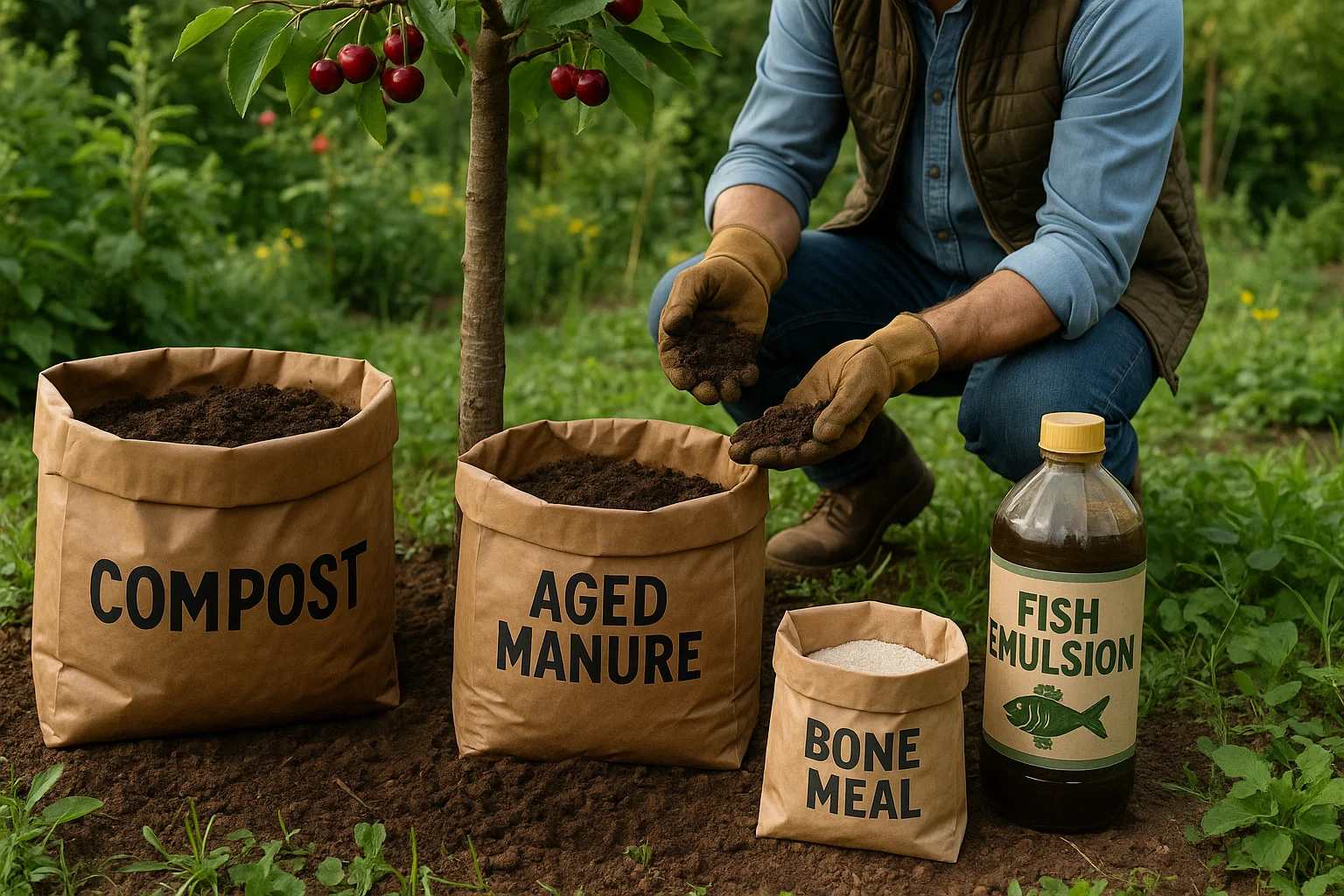
🌱 Compost 🌱
Compost is one of the best natural fertilizers you can use. It’s rich in nutrients, improves soil structure, and helps retain moisture. By applying a layer of compost around the base of your cherry tree, you feed the soil while promoting healthy root growth and tree vitality.
How to Apply: Spread a 2-3 inch layer of compost around the drip line in early spring, just before the growing season begins.
🐄 Aged Manure 🐄
Aged manure, such as cow or chicken manure, is another excellent organic fertilizer. It’s rich in nitrogen, phosphorus, and potassium, providing the balanced nutrients your cherry trees need. Just make sure the manure is well-aged to avoid burning the roots.
How to Apply: Apply a thin layer around the drip line and water well to help it break down into the soil.
🐟 Fish Emulsion 🐟
Fish emulsion is a liquid fertilizer made from fish byproducts. It’s high in nitrogen and trace minerals, promoting healthy growth and strong root systems. It’s fast-acting and ideal for boosting growth in the early spring.
How to Apply: Mix according to the label directions and apply directly to the soil around the drip line. Be careful not to overuse, as it can be strong for young trees.
🦴 Bone Meal 🦴
Bone meal is a slow-release source of phosphorus, perfect for encouraging strong root growth and flower development. It’s especially useful when planting new trees or supporting their early growth stages.
How to Apply: Sprinkle bone meal around the tree’s base and gently work it into the soil. Best used in early spring or when planting young trees.
🍂 Mulching 🍂
Mulch is not a direct fertilizer, but it provides important benefits by retaining moisture, regulating soil temperature, and slowly releasing nutrients as it decomposes. Organic mulches like wood chips, straw, or leaves work best.
How to Apply: Spread mulch around the base of the tree, but keep it away from the trunk. Aim for a 2-4 inch layer to conserve moisture and promote healthy soil.
🍵 Compost Tea 🍵
Compost tea is a liquid solution made by steeping compost in water. It’s packed with beneficial microbes that help break down organic matter and improve soil health, while also providing a mild nutrient boost for your cherry trees.
How to Apply: Apply compost tea directly to the soil around the tree’s drip line. It’s best used in the spring and again in mid-summer for an extra nutrient boost.
Benefits of Organic Fertilizers:
- 🌿 Improve long-term soil health and structure
- 🌱 Enhance microbial activity in the soil
- 🌾 Provide a steady, slow release of nutrients
- 🌍 Reduce environmental impact and support sustainable gardening practices
By incorporating organic options into your fertilization routine, you’ll not only keep your cherry trees healthy but also contribute to a healthier garden ecosystem. For eco-friendly and effective feeding tips, refer to the Best Fertilization Practices for Cherry Trees to Promote Growth and make informed choices for lasting results.💚
📅🌳 Fertilization Schedule Example 📅🌳
A consistent fertilization schedule is essential for keeping your cherry trees healthy and productive. Here’s a simple guide to help you time your applications right:
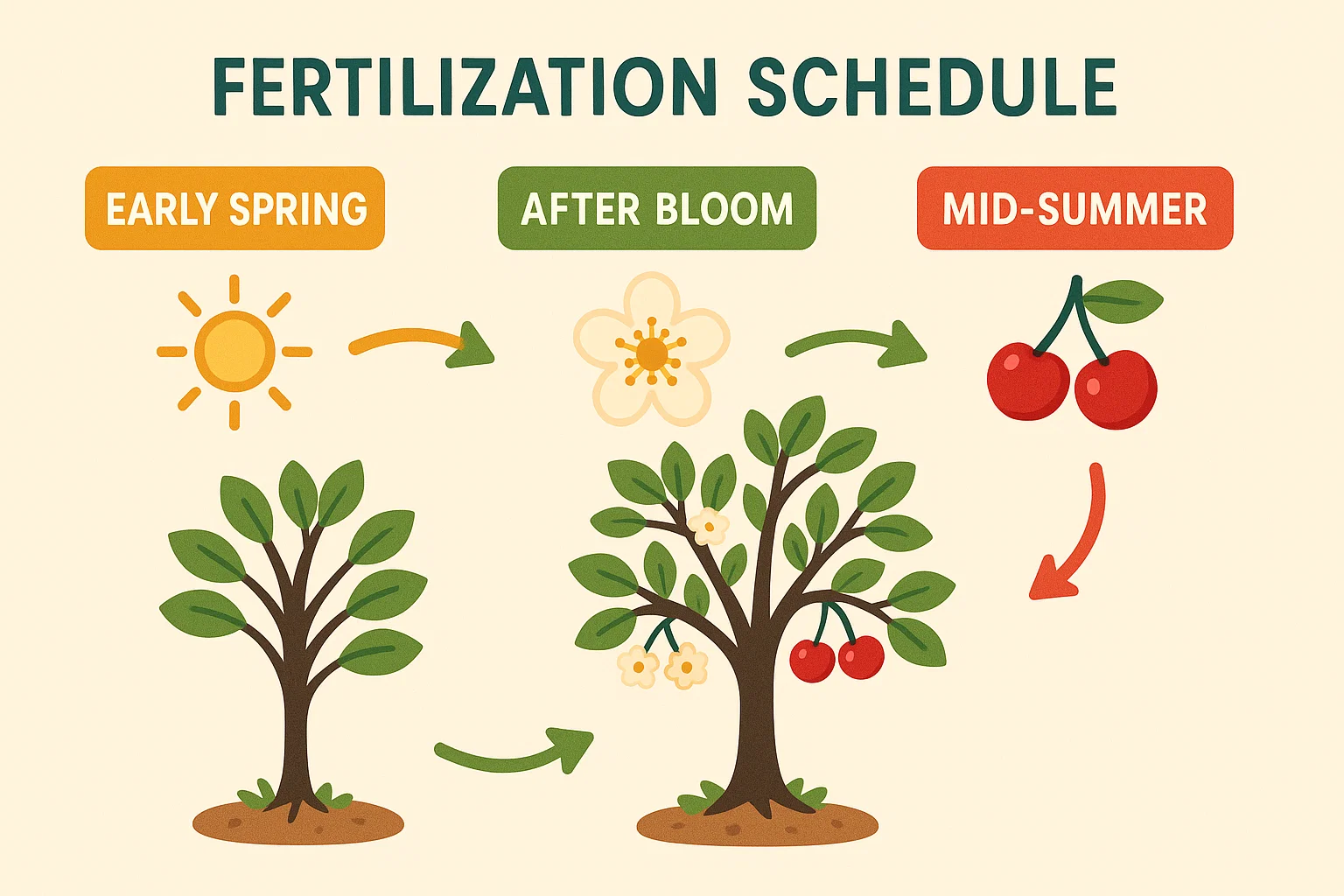
🌸 Early Spring (Before Budding) 🌸
What to do: Apply a balanced fertilizer or compost to support early growth and root development.
When: Late February to early March, before new growth appears.
Amount: Follow label instructions for the correct dosage.
🍒 After Blooming (Post-Harvest) 🍒
What to do: After fruiting, apply fertilizer to help your tree recover and prepare for the next season. Organic options like compost or fish emulsion work well.
When: Late spring to early summer, after harvesting.
Amount: Moderate dose to replenish nutrients.
🌞 Mid-Summer (Optional) 🌞
What to do: A light application of fertilizer can help support continued growth, especially in dry areas.
When: Late June to early July.
Amount: Apply about half the spring dose.
🍂 Fall (Avoid Fertilizing!) 🍂
What to do: Skip fertilizing in the fall to avoid encouraging tender growth that could be damaged by winter. Instead, mulch to protect the roots.
General Tips:
- Young Trees: Fertilize once in early spring until established.
- Established Trees: Fertilize twice a year — in early spring and after harvest.
- Soil Testing: Test soil every 2-3 years to ensure the right nutrient balance.
By following this simple fertilization schedule, your cherry trees will stay healthy, grow strong, and produce delicious fruit year after year! 🌳🍒
🌳💚 Final Thoughts 🌳💚
Fertilizing cherry trees is an essential part of maintaining healthy, productive plants. By understanding your tree’s nutrient needs, choosing the right fertilizers, and applying them at the right time, you can encourage vigorous growth, stunning blooms, and an abundant fruit harvest. 🌸🍒
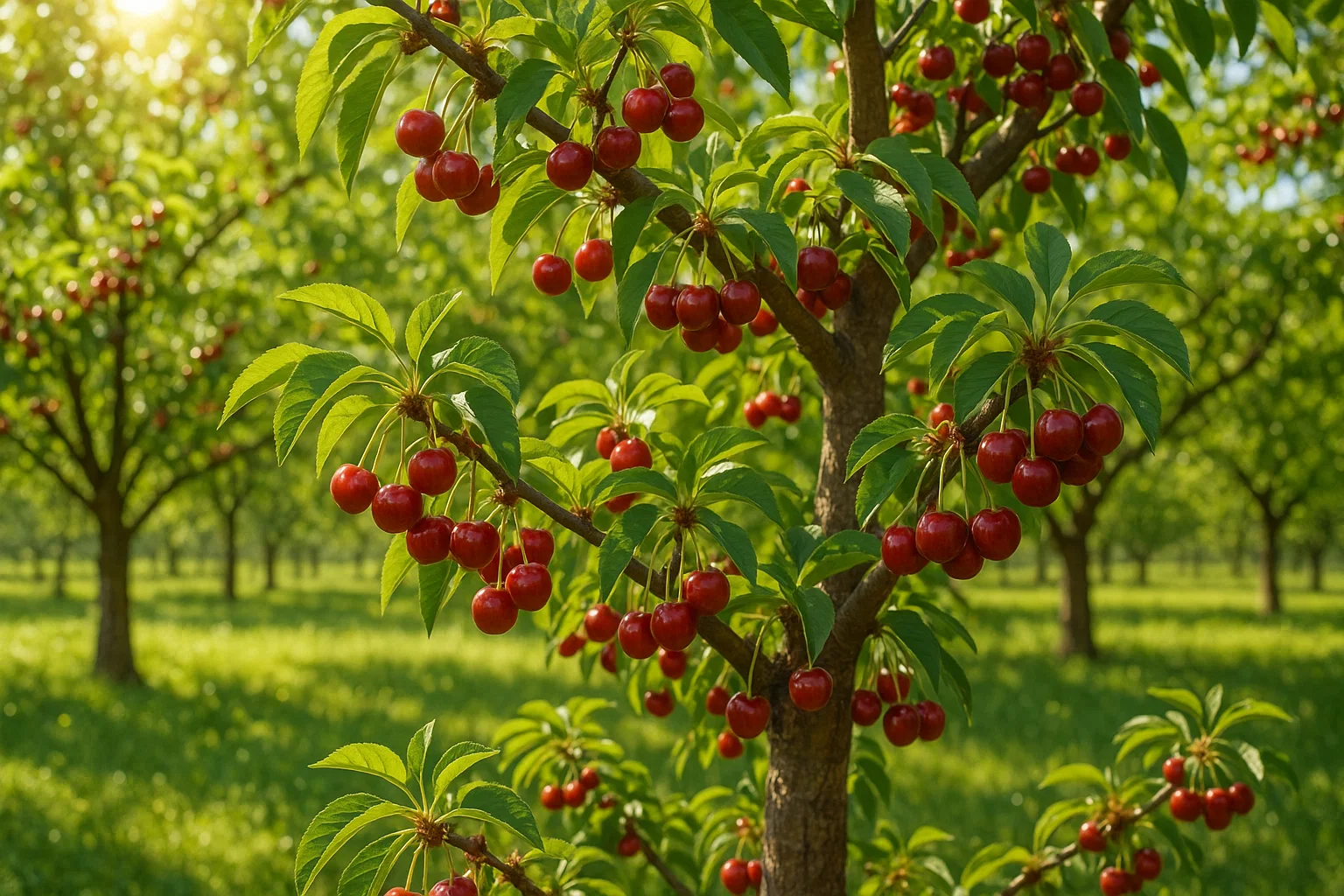
Whether you choose organic methods, synthetic fertilizers, or a balanced mix, the key is consistency and careful attention to your tree’s needs. Always remember to test your soil, avoid over-fertilizing, and follow a regular schedule to keep your trees thriving year after year. For a complete guide on nutrient care, explore the Best Fertilization Practices for Cherry Trees to Promote Growth and give your tree the support it needs. 🌿🪶
With these expert tips, you’re well on your way to creating a strong foundation for your cherry trees’ health and success. Happy gardening! 🌿🌱
Frequently Asked Questions (FAQ)
What are the best fertilization practices for cherry trees to promote growth?
The best practices include using balanced fertilizers, applying in early spring, and ensuring proper soil pH.
When should I fertilize my cherry trees for optimal growth?
Fertilize in early spring before bud break and again after fruiting if needed, depending on tree health.
What type of fertilizer is best for cherry trees?
Use a balanced 10-10-10 or slow-release fertilizer formulated for fruit trees, avoiding excess nitrogen.
How often should cherry trees be fertilized?
Once or twice a year is usually sufficient—once in early spring and optionally in midsummer if growth is weak.
Can over-fertilizing harm cherry trees?
Yes, over-fertilizing can cause excessive leaf growth, weak branches, and reduced fruit production.
Do young cherry trees need different fertilization than mature ones?
Yes, young trees benefit from lighter, more frequent feedings to support root development and early growth.
Is organic fertilizer effective for cherry trees?
Absolutely. Compost, aged manure, and organic blends can promote healthy, sustained growth over time.
How can I tell if my cherry tree needs fertilizer?
Signs include pale leaves, poor fruiting, slow growth, or yellowing—always test soil before applying.
